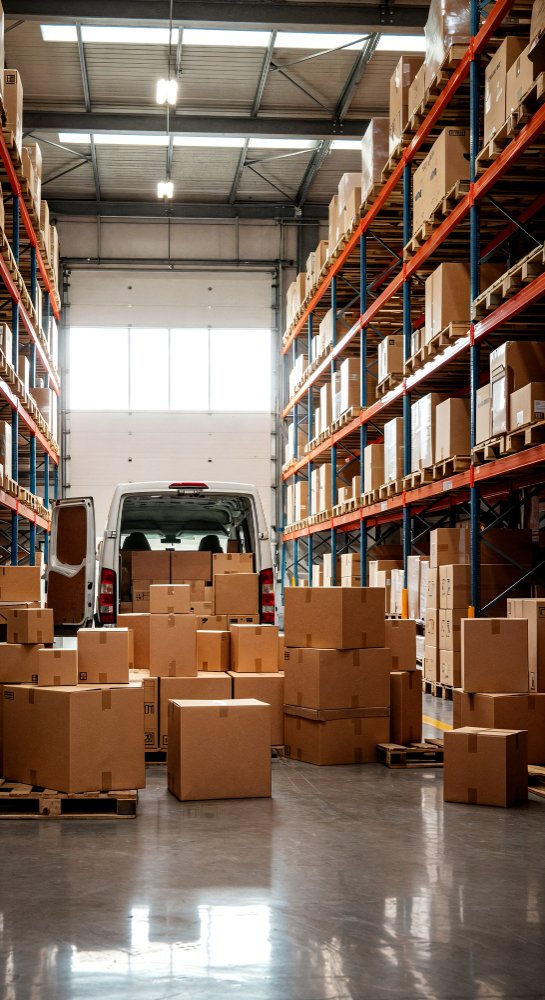When we think about fast deliveries and smooth business operations, we often credit transportation, technology, or eCommerce platforms. But behind all of it is something much less visible — warehouses. These massive storage hubs are the silent engine of global supply chains, ensuring that products are stored, sorted, and shipped with precision.
In this blog, we’ll break down what warehouses are, the different types, why they matter, and how they’re evolving in today’s digital world.
What Is a Warehouse?
A warehouse is a large commercial building used for the storage of goods before they are distributed for sale or use. It acts as a buffer between production and consumption — ensuring that businesses always have the right products in the right place at the right time.
Warehouses aren’t just about storing goods; they’re about managing inventory, optimizing order fulfillment, and enabling efficient logistics operations.
Key Functions of a Warehouse
- Storage of Goods
The core function — safely storing inventory until needed. - Inventory Management
Keeping accurate records of stock levels, locations, and movement. - Order Fulfillment
Picking, packing, and shipping orders to customers or retailers. - Value-Added Services
Labeling, kitting, customization, assembly, and quality control. - Risk Management
Protecting goods from damage, theft, or environmental hazards.
Types of Warehouses
Depending on the business model and logistics needs, different warehouse types serve different purposes:
- Public Warehouses
Available for rent by businesses needing temporary or flexible space. - Private Warehouses
Owned and operated by one company — often large retailers or manufacturers. - Distribution Centers
High-speed facilities designed to move goods quickly, not just store them. - Fulfillment Centers
Warehouses focused on eCommerce order processing and delivery. - Climate-Controlled Warehouses
Ideal for temperature-sensitive goods like food, pharmaceuticals, or electronics. - Automated Warehouses
Equipped with robotics, conveyor systems, and warehouse management software (WMS) to maximize efficiency.
Why Warehouses Are Essential to Modern Business
Ensure Product Availability
Warehouses make sure goods are on hand when and where customers need them.
Enable Faster Delivery
Strategically located warehouses reduce shipping times and costs.
Support eCommerce and Omnichannel Retail
With rising online shopping, warehouses enable accurate and fast order fulfillment.
Reduce Transportation Costs
Consolidating shipments and storing goods near major markets saves money.
Improve Customer Satisfaction
Accurate, timely deliveries lead to better customer experiences.
Trends Shaping the Future of Warehousing
Warehousing is no longer just about stacking boxes. New technologies and strategies are transforming it into a competitive advantage:
- Automation & Robotics
Picking and packing robots are speeding up operations and reducing errors. - Warehouse Management Systems (WMS)
Software that tracks inventory, manages workflows, and increases visibility. - Artificial Intelligence (AI) & Predictive Analytics
Helping companies forecast demand and optimize inventory levels. - Sustainability
Green warehouses use solar power, energy-efficient lighting, and recyclable materials. - Micro-Fulfillment Centers
Smaller warehouses in urban areas supporting same-day delivery.
When Does Your Business Need a Warehouse?
- You’re managing high inventory volume
- You need to store products before distribution
- You’re expanding into new markets
- You want to offer faster delivery options
- You sell through multiple sales channels
Whether you lease space in a public warehouse or build a dedicated facility, warehousing can significantly improve your supply chain efficiency.
Conclusion
Warehouses are more than just storage spaces — they are strategic assets that connect production with consumption. In a fast-moving, global economy, efficient warehousing isn’t optional; it’s essential.



